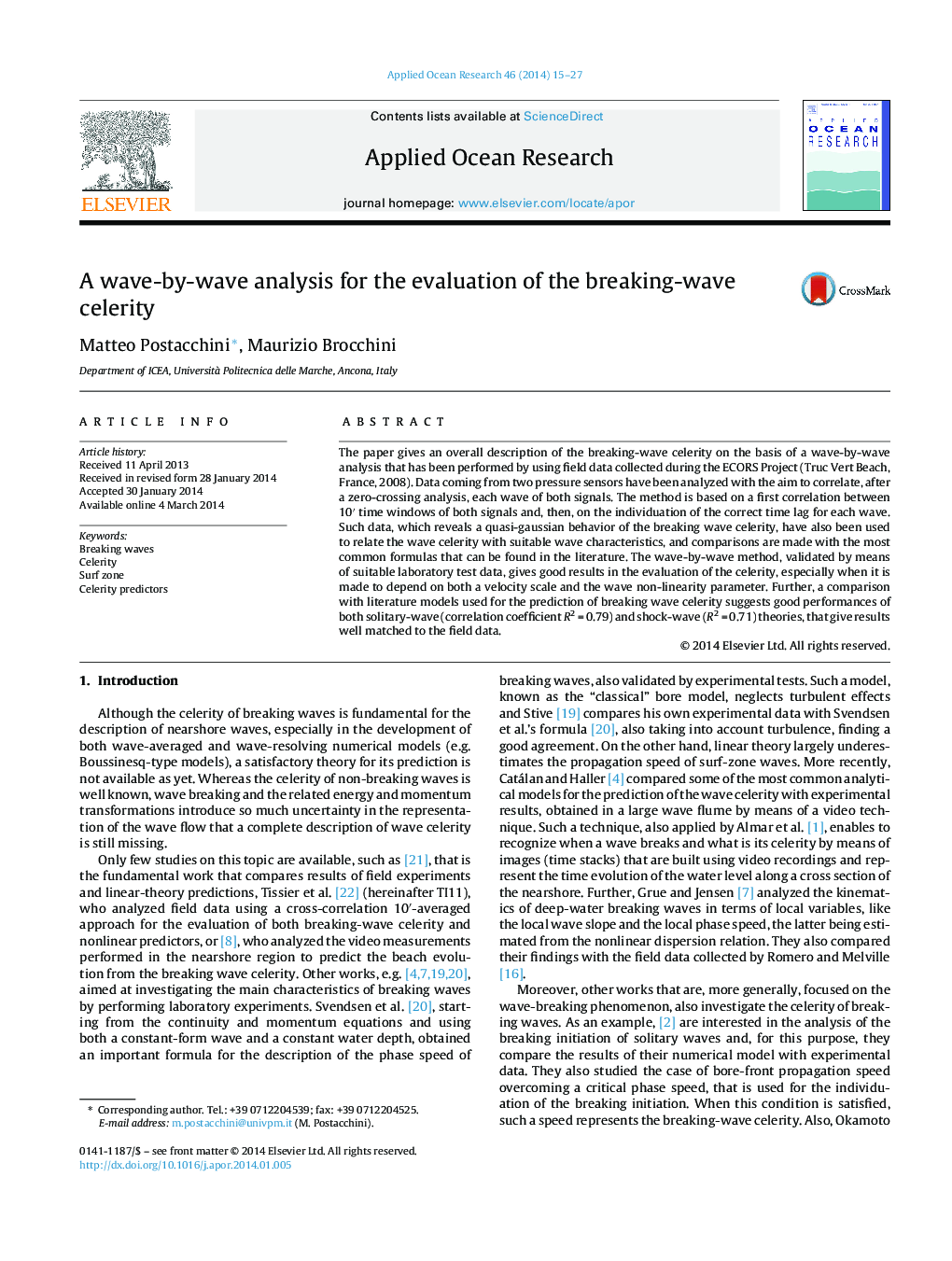| Article ID | Journal | Published Year | Pages | File Type |
|---|---|---|---|---|
| 1720076 | Applied Ocean Research | 2014 | 13 Pages |
•Characterization of the celerity of surf-zone waves using real wave data.•Wave-by-wave analysis of field data obtained from pressure sensors.•Evaluation of the breaking-wave celerity using video recordings of the nearshore sea surface.•Parametric analysis of the breaking-wave celerity.•Comparison of field data with literature formulas.
The paper gives an overall description of the breaking-wave celerity on the basis of a wave-by-wave analysis that has been performed by using field data collected during the ECORS Project (Truc Vert Beach, France, 2008). Data coming from two pressure sensors have been analyzed with the aim to correlate, after a zero-crossing analysis, each wave of both signals. The method is based on a first correlation between 10′ time windows of both signals and, then, on the individuation of the correct time lag for each wave. Such data, which reveals a quasi-gaussian behavior of the breaking wave celerity, have also been used to relate the wave celerity with suitable wave characteristics, and comparisons are made with the most common formulas that can be found in the literature. The wave-by-wave method, validated by means of suitable laboratory test data, gives good results in the evaluation of the celerity, especially when it is made to depend on both a velocity scale and the wave non-linearity parameter. Further, a comparison with literature models used for the prediction of breaking wave celerity suggests good performances of both solitary-wave (correlation coefficient R2 = 0.79) and shock-wave (R2 = 0.71) theories, that give results well matched to the field data.
